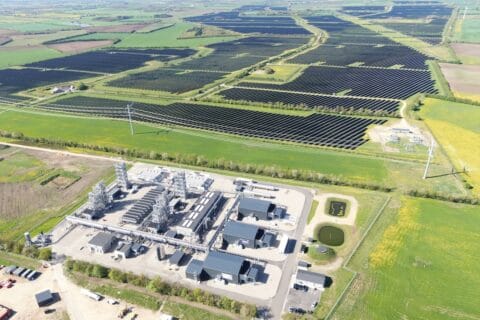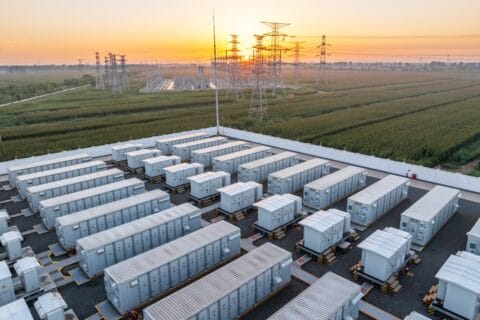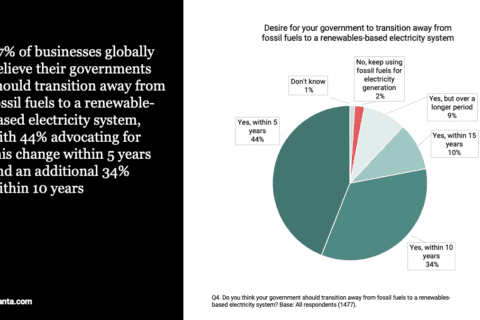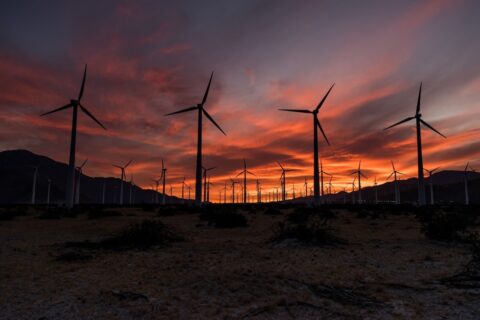
Decentralisation, decarbonisation and digitalisation are the watchwords for future growth in renewable energy worldwide. According to research just out, these dynamic and disruptive megatrends will drive change in the markets and on the ground, inspiring and supporting emergence of new business models, which together will shape the global power sector over the decade to come.
Recent analysis by Frost & Sullivan, published in their report Growth Opportunities from Decarbonization in the Global Power Market, 2019-2030, reveals that the 2020s will be crucial for all participants in the power industry as the transition toward renewable energy is expected to increase, while coal takes a downturn in most developed markets.
Falling costs and renewable-friendly energy policies adopted by several countries in the six major geographies — North America, Latin America, Europe, the Middle East, China, and India — are prominent reasons why solar photovoltaic (PV) and wind capacity additions are expected to soar this decade.
In total, an estimated $3.40tr will be invested in renewable energy during the next decade, including $2.72tr in wind and solar. By 2030, 54.1% of installed capacity will be renewable (including hydropower), and 37.9% will be a combination of solar and wind.
Change will be big, says Vasanth Krishnan, Senior Research Analyst, Industrial Practice, Frost & Sullivan.
“Decentralisation, decarbonisation, and digitalisation are the three key pillars of the global energy transition. The power sector will witness strong growth in decentralisation during the decade, with annual global investment increasing from $53.14bn in 2019 to $92.54bn in 2030.
“Pressure will also continue to build for further decarbonisation within the power system as the rate of adoption of digital technologies increases in both existing and future plants to boost operational performance.”
Operators are already coming under increasing pressure to manage the system, adds Krishnan:
“The surge in need for flexibility is the most significant trend observed across developed markets. As a result, technologies and solutions such as battery energy storage systems (BESS), gas engines, demand-side response (DSR), and virtual power plants (VPP) are witnessing unprecedented adoption rates amongst utilities, solution providers, and end-consumers.”
Conventional power plant operators will require extreme physical and digital agility to compete with alternative power sources and stay profitable in the longer term. In this regard, digital solutions will enable conventional thermal power plants to increase operational efficiency and asset utilisation to meet the present and future needs of a smart power grid.
Growth opportunities for market participants will vary considerably, depending on the region:
- North America: High energy costs drive strong market growth for energy service and performance contracting, which will more than double its size during the decade to be worth $19.14bn in 2030;
- Latin America: Population and GDP growth, coupled with increasing electrification and industrialisation, are forecast to drive electricity demand by 3.15% per annum to 2030;
- Europe: By 2030, $12.91bn is expected to be invested annually in battery energy storage — total installed capacity is expected to go up from 2.91 GW in 2019 to 70.02 GW by 2030;
- India: Renewable energy will account for 72.04% of capacity additions in India during the next decade —competitive solar PV and wind project costs will be key to future investment;
- China: Adoption of energy storage will accelerate rapidly in China — the country already accounts for 62% of global battery storage production capacity and is investing to boost capacity further — and this will benefit the energy storage sector, as it should enable battery prices to decline;
- Middle East: Bolstered by Saudi Arabia’s shift in energy policy, solar power in the Middle East will witness a surge in activity levels in the 2020s, with the UAE, Qatar, and Iran also expected to be major markets for PV.
Specialising in energy and environment research, Frost & Sullivan offers market analysis designed to help investors, corporate leaders and governments navigate economic changes and identify disruptive technologies, megatrends, new business models and companies to action; so highlighting growth opportunities to drive future success.
Further Reading:
- More about Frost & Sullivan’s Energy & Environment research.
>>> Do you have sustainability news to broadcast and share? If you would like to see it featured here on SustMeme, please use these Contact details to get in touch and send us your Press Release for editorial consideration. Thanks.






